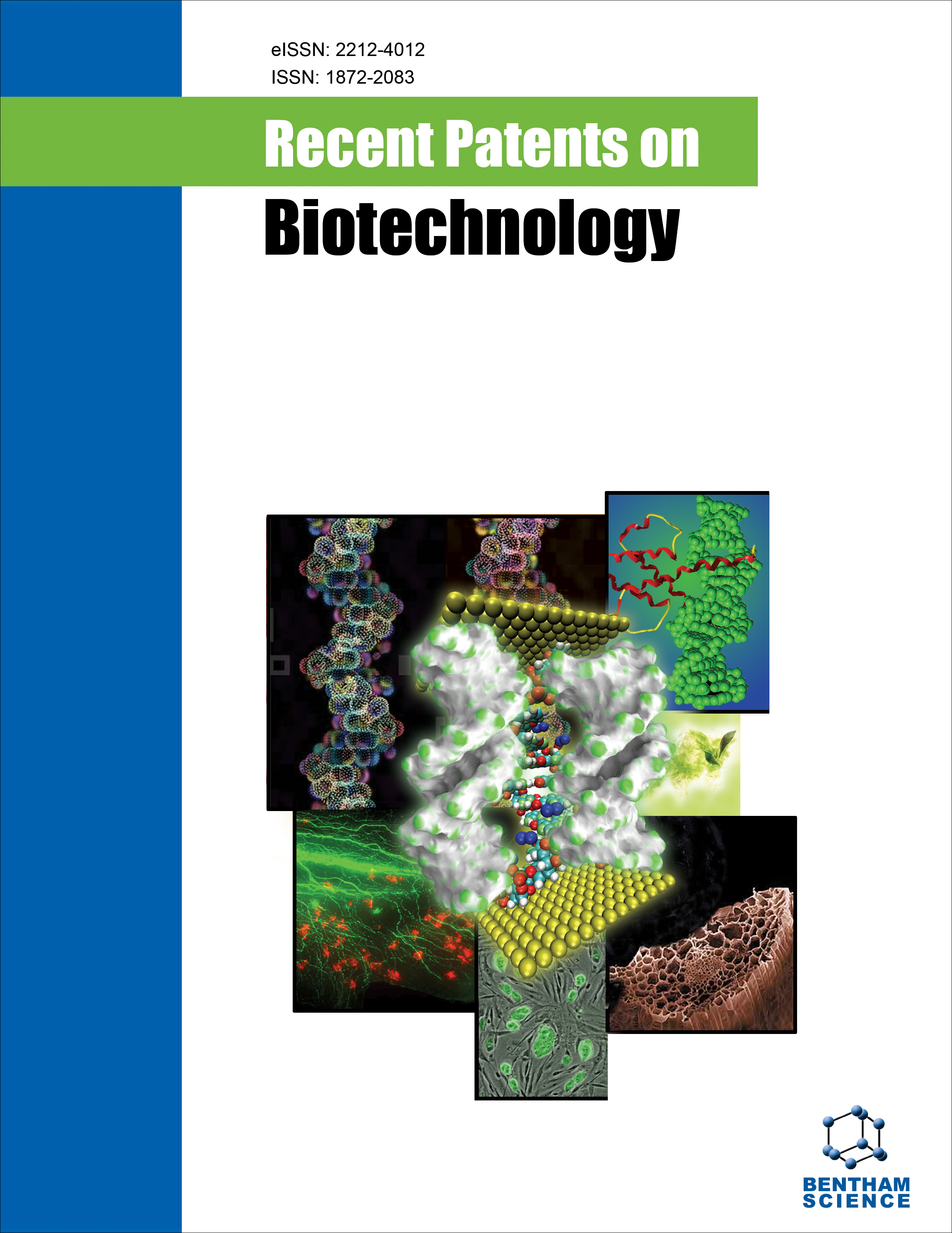- Home
- A-Z Publications
- Recent Patents on Biotechnology
- Issue Home
Recent Patents on Biotechnology - Current Issue
Volume 19, Issue 4, 2025
-
-
Application of Achras sapota Linn in Traditional Medicine
More LessThis patent article offers a thorough analysis of the contemporary application of Achras sapota Linn, or sapodilla, in conventional medicine. Tropical fruit-bearing Achras sapota Linn has long been used in many traditional medical systems. The study examines Achras sapota Linn's phytochemical makeup and pharmacological characteristics with an emphasis on the plant's possible medical uses in the treatment of a range of illness Read More
-
-
-
Current Scenario and Global Perspective of Sustainable Algal Biofuel Production
More LessIndustrialization and globalization have increased the demand for petroleum products that has increased a load on natural energy resources. The escalating fossil fuel utilization has resulted in surpassing the Earth's capacity to absorb greenhouse gases, necessitating the exploration of sustainable bioenergy alternatives to mitigate emissions. Biofuels, derived from algae, offer promising solutions to alleviate fossil fuel de Read More
-
-
-
A Patent Landscape on Methane Oxidizing Bacteria (MOB) or Methanotrophs
More LessAuthors: Abhishek Bokad and Manasi TelangMethane-oxidizing bacteria (MOB) or methanotrophs are a category of bacteria that rely on methane as their primary carbon and energy source. Methane is the second most abundant greenhouse gas after carbon dioxide and is comparatively far more potent in trapping heat in the atmosphere. MOBs are important microorganisms in the global carbon cycle where they play a crucial role in the oxidation of methane. Read More
-
-
-
Relevance of Microorganisms in Causing Rain and Snow
More LessAuthors: Rimple Kaul, Sunita Devi, Megha Sharma and Subhash ChandVarious natural phenomena (such as solar fluctuations, oceanic patterns, volcanic eruptions, and tectonic movements) alongside human activities (including deforestation, CO and CO2 emissions, and desertification) contribute to ongoing climate change and subsequent global warming. However, human actions significantly exacerbate global warming, amplifying its adverse impacts worldwide. With rising temperatures, w Read More
-
-
-
Curcumin-assisted Preparation of α-Fe2O3@TiO2 Nanocomposites for Antibacterial and Photocatalytic Activity
More LessAuthors: Anuskha Kala, Krati Saini, Sanjeev Kimothi, Rashmi Verma, Kamal K. Kar and Pankaj ChamoliBackgroundHarmful microorganisms like pathogens significantly impact human health. Meanwhile, industrial growth causes pollution and water contamination by releasing untreated hazardous waste. Effective treatment of these microorganisms and contaminants is essential, and nanocomposites may be a promising solution. The present attempt demonstrates the green synthesis of α-Fe2O3@TiO2 nanocomposite Read More
-
Volumes & issues
-
Volume 19 (2025)
-
Volume 18 (2024)
-
Volume 17 (2023)
-
Volume 16 (2022)
-
Volume 15 (2021)
-
Volume 14 (2020)
-
Volume 13 (2019)
-
Volume 12 (2018)
-
Volume 11 (2017)
-
Volume 10 (2016)
-
Volume 9 (2015)
-
Volume 8 (2014)
-
Volume 7 (2013)
-
Volume 6 (2012)
-
Volume 5 (2011)
-
Volume 4 (2010)
-
Volume 3 (2009)
-
Volume 2 (2008)
-
Volume 1 (2007)
Most Read This Month Most Read RSS feed
Article
content/journals/biot
Journal
10
5
false
en


